Guardians of the Forest
April 2024
|Muse Science Magazine for Kids
EARLY, MAKESHIFT WILDLIFE DRONES HELPED TO DETECT AND PROTECT ORANGUTANS.

In a steamy rainforest, an orangutan scales a tree, gripping and grabbing with fingers and toes. Palm fronds rustle. At the top, it uses its teeth and hairy hands to rip away the bark, revealing the ivory-colored center, the “heart of the palm.” High in the sky, the creature crunches on the tender stalk.
In a field nearby, Serge Wich, biologist, ecologist, and professor at Liverpool John Moores University in England, is studying orangutans. Wich and his colleague, Lian Pin Koh, are working in Sumatra, an Indonesian island in Asia. They’re running a series of tests with one of the first drones ever used to study wildlife. It’s 2011, and drones aren’t yet common. They cobbled this one together from spare parts. They need to count orangutan nests to monitor the population, and they’re hoping this drone can help.
Why Study Orangutans?
These shaggy apes face many threats. They live in tropical rainforests on Sumatra and Borneo, but the lush forests are under siege. Agriculture, mining, logging, and palm oil plantations are destroying and dividing the land. Palm oil is found in many foods and products you use, like chocolate, potato chips, and soap. Orangutans eat mainly fruit, but loggers prize the hardwood from these trees.

هذه القصة من طبعة April 2024 من Muse Science Magazine for Kids.
اشترك في Magzter GOLD للوصول إلى آلاف القصص المتميزة المنسقة، وأكثر من 9000 مجلة وصحيفة.
هل أنت مشترك بالفعل؟ تسجيل الدخول
المزيد من القصص من Muse Science Magazine for Kids
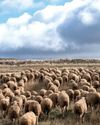
Muse Science Magazine for Kids
ANIMAL FIREFIGHTER TO THE RESCUE
Can animals help manage the risks of deadly wildfires?
3 mins
Muse July 2025: The Story Behind Wildfires

Muse Science Magazine for Kids
FIRE DANGER
WHY THE RISK OF WILDFIRES KEEPS GROWING
4 mins
Muse July 2025: The Story Behind Wildfires
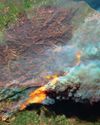
Muse Science Magazine for Kids
The Miller NEW Normal
WHAT TODAY’S WILDFIRES TELL US ABOUT OUR FUTURE
8 mins
Muse July 2025: The Story Behind Wildfires
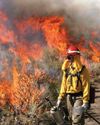
Muse Science Magazine for Kids
WOMEN AND FIREFIGHTING: A GOOD FIT
Jessica Gardetto is a firefighter. Her father was, too. “I grew up with my dad coming home smelling like wildfire and covered in soot,” she says.
1 min
Muse July 2025: The Story Behind Wildfires

Muse Science Magazine for Kids
What is happening on your fingertips when they get all wrinkly in a hot tub?
—Felix G., age 10, Montana
1 mins
Muse July 2025: The Story Behind Wildfires

Muse Science Magazine for Kids
WHEN the SMOKE CLEARS
THE LINGERING EFFECTS OF THE RECENT PACIFIC PALISADES AND ALTADENA EATON FIRES
6 mins
Muse July 2025: The Story Behind Wildfires

Muse Science Magazine for Kids
PICKING TEAMS
Keep it fair with a strategy that relies on geometry.
2 mins
Muse July 2025: The Story Behind Wildfires
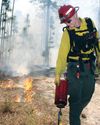
Muse Science Magazine for Kids
SHAN CAMMACK
WILDLIFE BIOLOGIST AND FIRE SAFETY OFFICER
3 mins
Muse July 2025: The Story Behind Wildfires
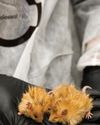
Muse Science Magazine for Kids
Scientists Create Mice With Woolly Mammoth-Like Fur
RESEARCHERS AT A COMPANY IN TEXAS ARE WORKING TO CREATE A LIVING ANIMAL THAT RESEMBLES THE EXTINCT WOOLLY MAMMOTH. Recently, they produced mice with traits of the large mammal. The mice all have coats with mammoth-like fur, and some of the small mammals also have genes that help them store fat. Both features would help the animals survive in the cold Arctic, where the woolly mammoth once lived.
1 min
Muse July 2025: The Story Behind Wildfires

Muse Science Magazine for Kids
Cool Sunshade Added to the Nancy Roman Space Telescope
THE NANCY ROMAN SPACE TELESCOPE IS A NEW TELESCOPE THAT NASA IS BUILDING AND WILL LAUNCH INTO SPACE, LIKELY IN EARLY 2027.
1 min
Muse July 2025: The Story Behind Wildfires
Listen
Translate
Change font size

